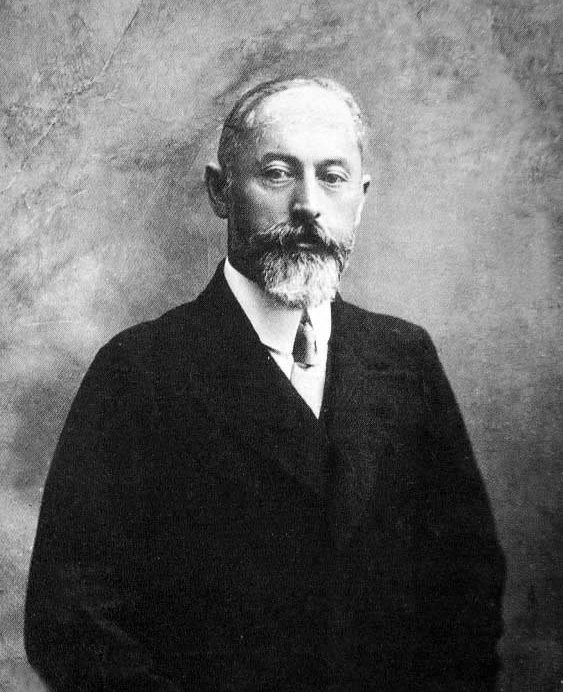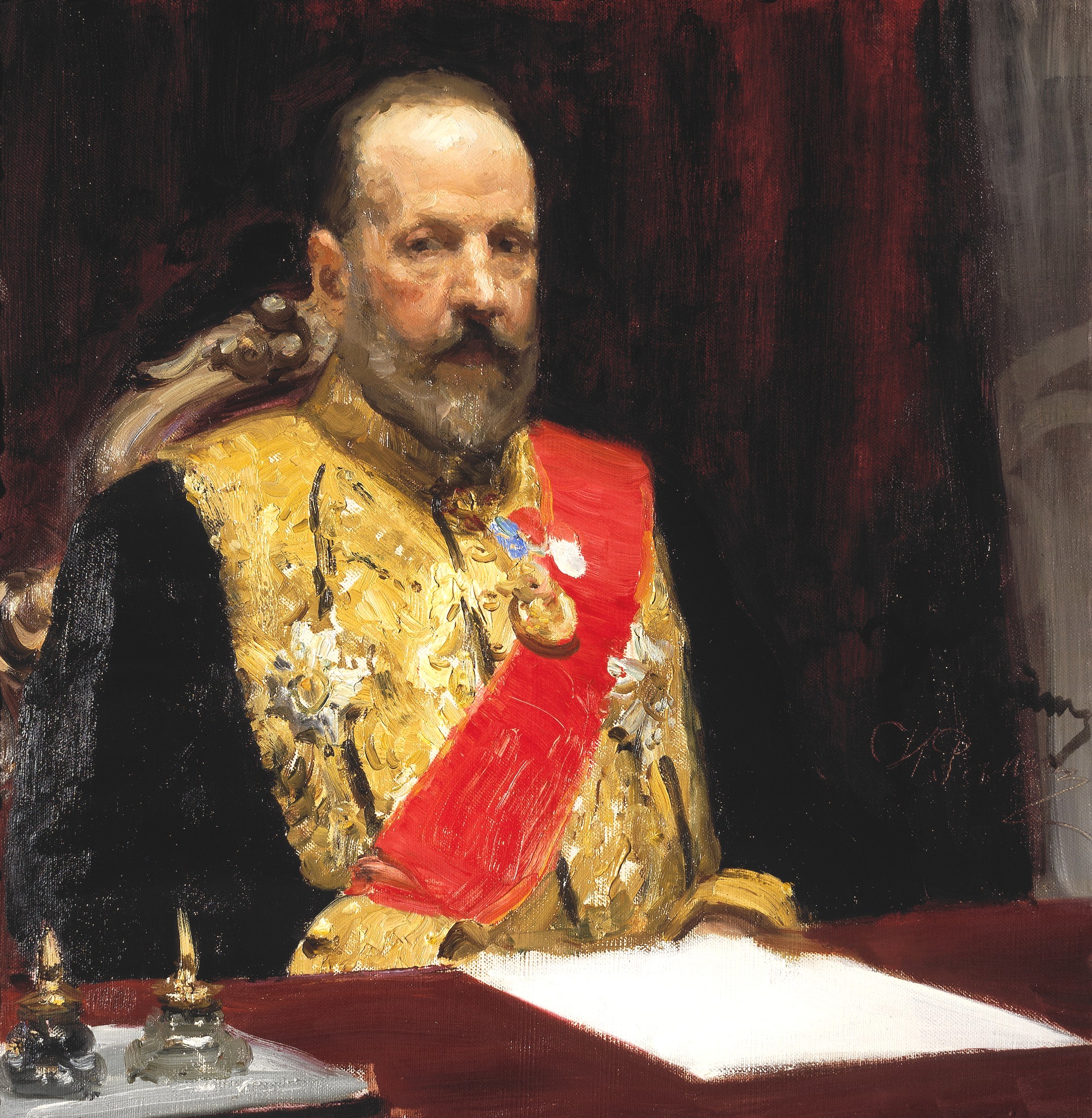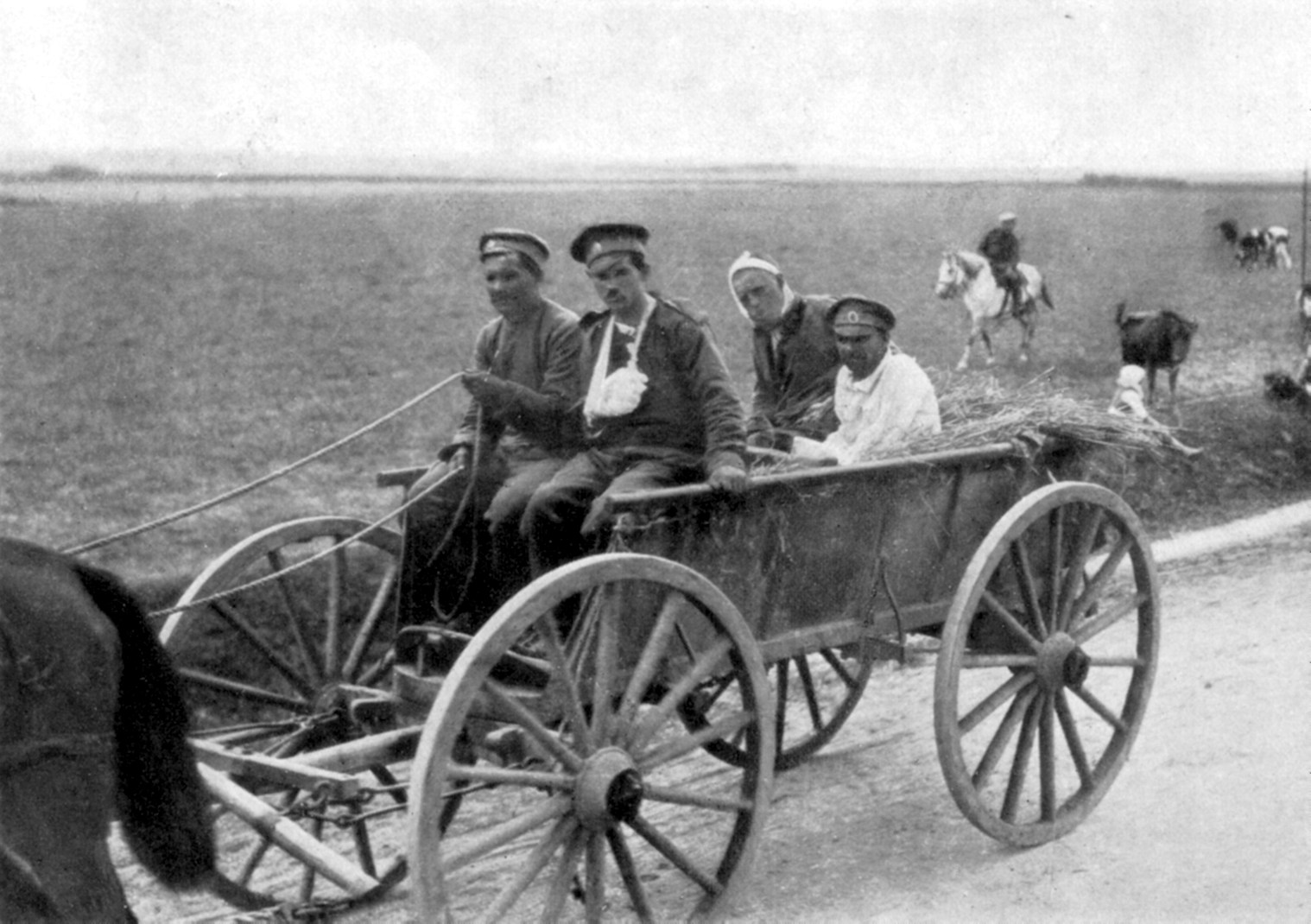|
Menshevik
The Mensheviks ('the Minority') were a faction of the Marxist Russian Social Democratic Labour Party (RSDLP) which split with Vladimir Lenin's Bolshevik faction at the Second Party Congress in 1903. Mensheviks held more moderate and reformist views as compared to the Bolsheviks, and were led by figures including Julius Martov and Pavel Axelrod. The initial point of disagreement was the Mensheviks' support for a broad party membership, as opposed to Lenin's support for a smaller party of professional revolutionaries. The Bolsheviks gained a majority on the Central Committee in 1903, although the power of the two factions fluctuated in the following years. Mensheviks were associated with Georgi Plekhanov's position that a bourgeois-democratic revolution and period of capitalism would need to occur before the conditions for a socialist revolution emerged. Some Mensheviks, notably Alexander Potresov, called for the party to suspend illegal revolutionary work to focus more on tr ... [...More Info...] [...Related Items...] OR: [Wikipedia] [Google] [Baidu] |
Leon Trotsky
Lev Davidovich Bronstein ( – 21 August 1940), better known as Leon Trotsky,; ; also transliterated ''Lyev'', ''Trotski'', ''Trockij'' and ''Trotzky'' was a Russian revolutionary, Soviet politician, and political theorist. He was a key figure in the 1905 Revolution, October Revolution of 1917, Russian Civil War, and the establishment of the Soviet Union, from which he was exiled in 1929 before Assassination of Leon Trotsky, his assassination in 1940. Trotsky and Vladimir Lenin were widely considered the two most prominent figures in the Soviet state from 1917 until Death and state funeral of Vladimir Lenin, Lenin's death in 1924. Ideologically a Marxist and a Leninist, Trotsky's ideas inspired a school of Marxism known as Trotskyism. Trotsky joined the Russian Social Democratic Labour Party in 1898, being arrested and exiled to Siberia for his activities. In 1902 he escaped to London, where he met Lenin. Trotsky initially sided with the Mensheviks against Lenin's Bolsheviks in ... [...More Info...] [...Related Items...] OR: [Wikipedia] [Google] [Baidu] |
Russian Social Democratic Labour Party
The Russian Social Democratic Labour Party (RSDLP), also known as the Russian Social Democratic Workers' Party (RSDWP) or the Russian Social Democratic Party (RSDP), was a socialist political party founded in 1898 in Minsk, Russian Empire. The party emerged from the merger of various Marxist groups operating under Tsarist repression, and was dedicated to the overthrow of the autocracy and the establishment of a socialist state based on the revolutionary leadership of the Russian proletariat. The RSDLP's formative years were marked by ideological and strategic disputes culminating at its Second Congress in 1903, where the party split into two main factions: the Bolsheviks, led by Vladimir Lenin, who advocated a tightly organized vanguard of professional revolutionaries; and the Mensheviks, led by Julius Martov and others, who favored a more moderate, broad-based model. During and in the years after the 1905 Revolution, the RSDLP operated both legally and underground, publ ... [...More Info...] [...Related Items...] OR: [Wikipedia] [Google] [Baidu] |
Russian Social Democratic Labor Party (Bolsheviks)
The Russian Social Democratic Labour Party (RSDLP), also known as the Russian Social Democratic Workers' Party (RSDWP) or the Russian Social Democratic Party (RSDP), was a Socialism, socialist political party founded in 1898 in Minsk, Russian Empire. The party emerged from the merger of various Marxism, Marxist groups operating under Tsarist autocracy, Tsarist repression, and was dedicated to the overthrow of the autocracy and the establishment of a socialist state based on the revolutionary leadership of the Russian proletariat. The RSDLP's formative years were marked by ideological and strategic disputes culminating at its 2nd Congress of the Russian Social Democratic Labour Party, Second Congress in 1903, where the party split into two main factions: the Bolsheviks, led by Vladimir Lenin, who advocated a tightly organized Vanguardism, vanguard of professional revolutionaries; and the Mensheviks, led by Julius Martov and others, who favored a more moderate, broad-based model. ... [...More Info...] [...Related Items...] OR: [Wikipedia] [Google] [Baidu] |
Julius Martov
Yuliy Osipovich Tsederbaum (24 November 1873 – 4 April 1923), better known as Julius Martov, was a Russian revolutionary, politician, and a leader of the Mensheviks, a faction of the Russian Social Democratic Labour Party (RSDLP). A close associate of Vladimir Lenin prior to 1903, Martov broke with him following the RSDLP's ideological schism, after which Lenin led the opposing faction, the Bolsheviks. Martov opposed Lenin's plan for a party restricted to professional revolutionaries, and called for a mass party modelled after Western European social democratic parties. Martov was born to a middle-class and politically active Jewish family in Constantinople. He was raised in Odessa and embraced Marxism after the Russian famine of 1891–1892. Martov briefly enrolled at Saint Petersburg Imperial University, but was later expelled and exiled to Vilna, where he developed influential ideas on worker agitation. Returning to Saint Petersburg in 1895, Martov collaborated with Vla ... [...More Info...] [...Related Items...] OR: [Wikipedia] [Google] [Baidu] |
State Duma (Russian Empire)
The State Duma, also known as the Imperial Duma, was the lower house of the legislature in the Russian Empire, while the upper house was the State Council. It held its meetings in the Tauride Palace in Saint Petersburg. It convened four times between 27 April 1906 and the collapse of the empire in February 1917. The first and the second dumas were more democratic and represented a greater number of national types than their successors. The third duma was dominated by gentry, landowners, and businessmen. The fourth duma held five sessions; it existed until 2 March 1917, and was formally dissolved on 6 October 1917. History Coming under pressure from the Russian Revolution of 1905, on August 6, 1905 (O.S.), Sergei Witte (appointed by Nicholas II to manage peace negotiations with Japan after the Russo-Japanese War of 1904–1905) issued a manifesto about the convocation of the Duma, initially thought to be a purely advisory body, the so-called Bulygin-Duma. In the subsequen ... [...More Info...] [...Related Items...] OR: [Wikipedia] [Google] [Baidu] |
Russian Civil War
The Russian Civil War () was a multi-party civil war in the former Russian Empire sparked by the 1917 overthrowing of the Russian Provisional Government in the October Revolution, as many factions vied to determine Russia's political future. It resulted in the formation of the Russian Soviet Federative Socialist Republic, Russian Socialist Federative Soviet Republic and later the Soviet Union in most of its territory. Its finale marked the end of the Russian Revolution, which was one of the key events of the 20th century. The List of Russian monarchs, Russian monarchy ended with the abdication of Nicholas II, Tsar Nicholas II during the February Revolution, and Russia was in a state of political flux. A tense summer culminated in the October Revolution, where the Bolsheviks overthrew the Russian Provisional Government, provisional government of the new Russian Republic. Bolshevik seizure of power was not universally accepted, and the country descended into a conflict which beca ... [...More Info...] [...Related Items...] OR: [Wikipedia] [Google] [Baidu] |
White Movement
The White movement,. The old spelling was retained by the Whites to differentiate from the Reds. also known as the Whites, was one of the main factions of the Russian Civil War of 1917–1922. It was led mainly by the Right-wing politics, right-leaning and Conservatism, conservative officers of the Russian Empire, while the Bolsheviks who led the October Revolution in Russia, also known as the ''Reds'', and their supporters, were regarded as the main enemies of the Whites. It operated as a loose system of governments and administrations and military formations collectively referred to as the White Army, or the White Guard. Although the White movement included a variety of political opinions in Russia opposed to the Bolsheviks, from the republican-minded liberals through monarchists to the ultra-nationalist Black Hundreds, and did not have a universally-accepted leader or doctrine, the main force behind the movement were the conservative officers, and the resulting movement shared ... [...More Info...] [...Related Items...] OR: [Wikipedia] [Google] [Baidu] |
Coup D'état
A coup d'état (; ; ), or simply a coup , is typically an illegal and overt attempt by a military organization or other government elites to unseat an incumbent leadership. A self-coup is said to take place when a leader, having come to power through legal means, tries to stay in power through illegal means. By one estimate, there were 457 coup attempts from 1950 to 2010, half of which were successful. Most coup attempts occurred in the mid-1960s, but there were also large numbers of coup attempts in the mid-1970s and the early 1990s. Coups occurring in the post-Cold War period have been more likely to result in democratic systems than Cold War coups, though coups still mostly perpetuate authoritarianism. Many factors may lead to the occurrence of a coup, as well as determine the success or failure of a coup. Once a coup is underway, coup success is driven by coup-makers' ability to get others to believe that the coup attempt will be successful. The number of successful cou ... [...More Info...] [...Related Items...] OR: [Wikipedia] [Google] [Baidu] |
October Revolution
The October Revolution, also known as the Great October Socialist Revolution (in Historiography in the Soviet Union, Soviet historiography), October coup, Bolshevik coup, or Bolshevik revolution, was the second of Russian Revolution, two revolutions in Russia in 1917. It was led by Vladimir Lenin's Bolsheviks as part of the broader Russian Revolution of 1917–1923. It began through an insurrection in Petrograd (now Saint Petersburg) on . It was the precipitating event of the Russian Civil War. The initial stage of the October Revolution, which involved the assault on Petrograd, occurred largely without any casualties. The October Revolution followed and capitalized on the February Revolution earlier that year, which had led to the abdication of Nicholas II and the creation of the Russian Provisional Government. The provisional government, led by Alexander Kerensky, had taken power after Grand Duke Michael Alexandrovich of Russia, Grand Duke Michael, the younger brother of ... [...More Info...] [...Related Items...] OR: [Wikipedia] [Google] [Baidu] |
Russian Provisional Government
The Russian Provisional Government was a provisional government of the Russian Empire and Russian Republic, announced two days before and established immediately after the abdication of Nicholas II on 2 March, O.S. New_Style.html" ;"title="5 March 1917, New Style">N.S. during the February Revolution. The intention of the provisional government was the organization of elections to the Russian Constituent Assembly and its convention. The provisional government, led first by Prince Georgy Lvov and then by Alexander Kerensky, lasted approximately eight months, and ceased to exist when the Bolsheviks gained power in the October Revolution in October ovember, N.S.1917. According to Harold Whitmore Williams, the history of the eight months during which Russia was ruled by the Provisional Government was the history of the steady and systematic disorganization of the army. The Provisional Government was a caretaker government, with its political system and the status of the monarc ... [...More Info...] [...Related Items...] OR: [Wikipedia] [Google] [Baidu] |
February Revolution
The February Revolution (), known in Soviet historiography as the February Bourgeois Democratic Revolution and sometimes as the March Revolution or February Coup was the first of Russian Revolution, two revolutions which took place in Russia in 1917. The main events of the revolution took place in and near Petrograd (now Saint Petersburg), the then-capital of Russia, where long-standing discontent with the monarchy erupted into mass protests against food rationing on 23 February Old Style and New Style dates, Old Style (8 March Old Style and New Style dates, New Style). Revolutionary activity lasted about eight days, involving mass demonstrations and violent armed clashes with police and Special Corps of Gendarmes, gendarmes, the last loyal forces of the Russian monarchy. On 27 February O.S. (12 March N.S.), most of the forces of the capital's garrison sided with the revolutionaries. In the same day, the Russian Provisional Government, made up by left-leaning State Duma (Russ ... [...More Info...] [...Related Items...] OR: [Wikipedia] [Google] [Baidu] |
Menshevik-Internationalists
The Menshevik-Internationalists were a faction inside the Russian Social Democratic Labour Party (Mensheviks). The faction, representing the left-wing inside the party, emerged in May 1917. It was joined by a number of political leaders returning from exile, the most notable being Julius Martov. The Menshevik-Internationalists opposed the pro-war line of Dan and Tsereteli. The Menshevik-Internationalists hoped to sway the Menshevik Party over to an anti-war stance. The Menshevik-Internationalists dominated the Menshevik Party Organizations in Kharkov, Tula and some other places. They had some control over the Petrograd branch of the party. At the Menshevik Party congress in August 1917, the Menshevik-Internationalists represented about a third of the gathered delegates. A major chunk of the Menshevik-Internationalist faction broke away and joined the Bolsheviks in August 1917. This group included Yuri Larin. At the election for the All-Russian Central Executive Committee The Al ... [...More Info...] [...Related Items...] OR: [Wikipedia] [Google] [Baidu] |








